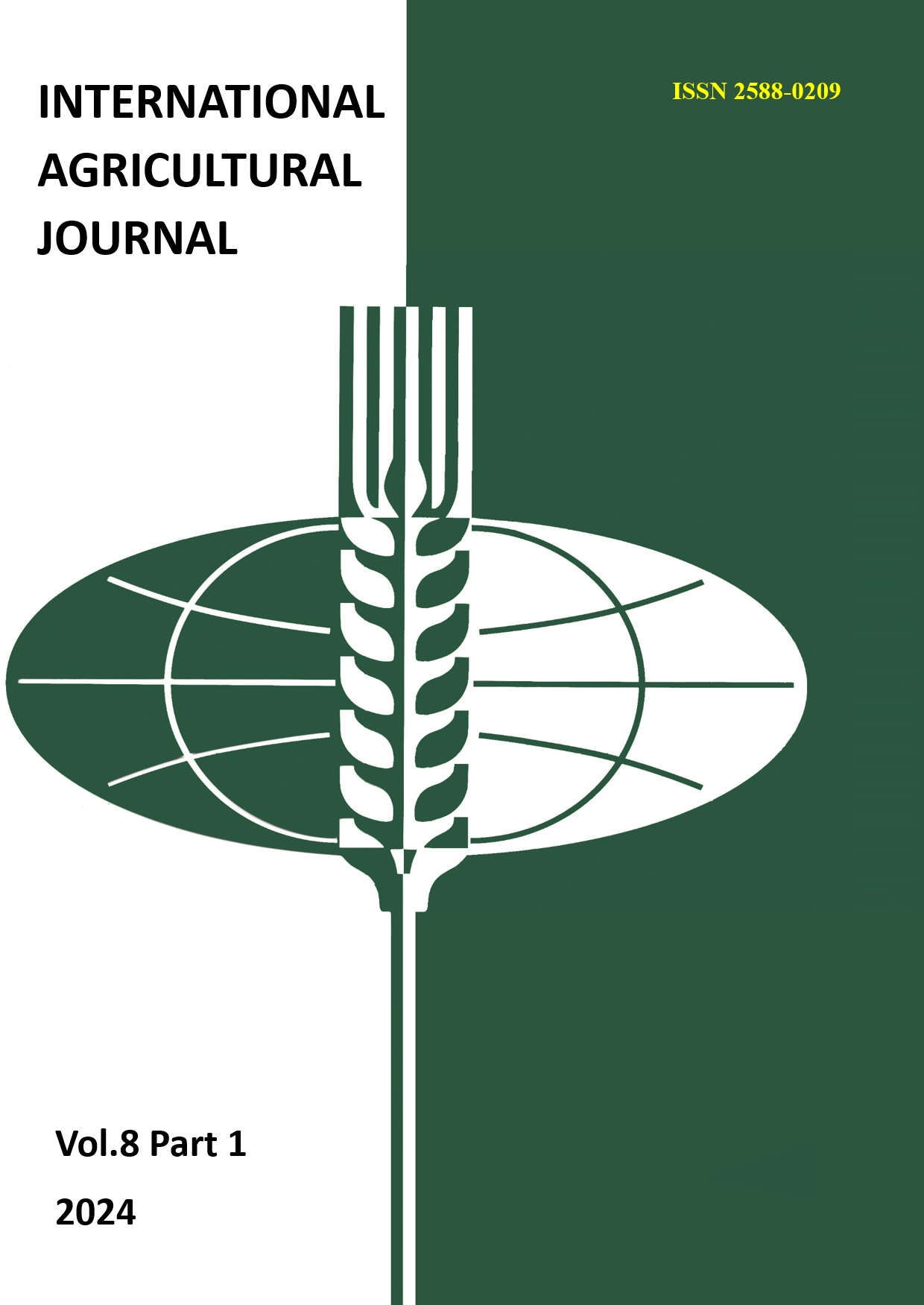ASSESSMENT OF THE EFFECTIVENESS OF THE BASIS IN THE COMBAT OF WEEDS IN CORN AGROCENOSIS
Main Article Content
Abstract
The problems of increasing the yield of field crops and reducing the pesticide load on the agrocenosis are the main ones at the present stage. This determined the research: studying the possibilities of integrated use of herbicides and growth regulators in order to reduce the pesticide load and improve farming standards. The purpose of the study is to assess the effectiveness of the integrated application of Basis and growth regulators on corn in the forest-steppe zone of the Chechen Republic. The study was carried out against the background of a complex type of contamination. The use of derivatives of humic substances made it possible to reduce the number and air-dry mass of weeds, the death rate was 57.5-63.2%. The use of preparations containing microorganisms ensured the death of 54.0-66.0% of weeds in comparison with the control. With the use of growth regulators and derivatives of humic substances, 6.27-7.36 t/ha of corn grain was obtained. The yield is slightly lower when using the microbiological preparation Vostok EM-1 7.47 (71.7%) -8.60 (97.7%) t/ha. The integrated use of growth regulators and Basis ensured grain yields of 7.99-9.75 t/ha. The highest yield was obtained with the combined use of Basis and humic substance derivative Humate+7 0.01% - 9.75 t/ha and the microbiological preparation Vostok EM-1 1.0% - 8.61 t/ha. In the conditions of the forest-steppe zone of the Chechen Republic, in order to combat weeds and reduce the stress impact on plants of mid-season corn hybrids, the most effective is the use of preparations derived from humic substances Gumat + 7 0.1% and the microbiological preparation Vostok EM-1.
Article Details
References
2. Adaev N.L., Okazova Z.P., Amaeva A.G., Khomutova A.G. Economic thresholds of harmfulness of weeds in maize agrocenosis. Database registration certificate № 2023624523 dated 12.11.2023. Application № 2023624339 23.11.2023.
3. Adinyaev E.D. Techniques for increasing the yield and grain quality of corn hybrids of domestic and foreign selection. / E.D. Adinyaev, A.G. Amaeva, D.O. Palaeva, M.Kh. Kavarnukaeva, N.L. Adaev. // News of the Mountain State Agrarian University. - 2012. - T. 49. - № 1-2. - P. 7-11.
4. Guba E.I. Herbicides for corn protection. / E.I. Guba, V.N. Bagrintseva, S.V. Kuznetsova. // Protection and quarantine of plants. - 2021. - № 6. - P. 21-23.
5. Zakharova M.N., Rozhkova L.V. Biological and economic effectiveness of herbicides in protecting corn crops for grain in the Ryazan region. / M.N. Zakharova, L.V. Rozhkova. // Agricultural science. - 2023. - № 5. - P. 88-92.
6. Isaev V.V. Weed forecasting and mapping. / V.V. Isaev. // M.: Agropromizdat, 1990. - 192 p.
7. Kostyuk A.V., Lukacheva N.G. Efficiency of foliar herbicides in corn crops for grain. / A.V. Kostyuk, N.G. Lukacheva. // Siberian Bulletin of Agricultural Science. - 2018. - T. 48. - № 4. - P. 20-26.
8. Guidelines for field testing of herbicides. M., 1981. - 46 p.
9. Okazova Z.P., Agaeva F.A., Medoeva N.S. Methods of environmental research. Database registration certificate № 2020620373 28.02.2020. Application № 2020620223 dated 18.02.2020.
10. Khanieva I.M. The influence of varietal characteristics and sowing dates on the yield of sweet corn in Kabardino-Balkaria. / THEM. Khanieva, Z.S. Shibzukhov, Yu.M. Shogenov. // Problems of development of the agro-industrial complex of the region. - 2018. - № 2(34). - P. 102-108.
11. Benvenuti S. Weed dynamics in the Mediterranean urban ecosystem: ecology, biodiversity and management. / S. Benvenuti. // Weed Res. – 2004. - V.44. - P.341-354.

